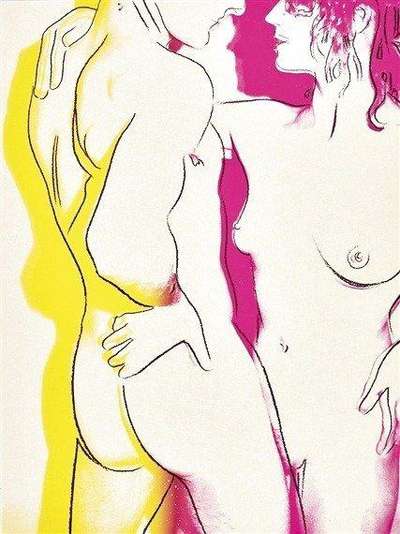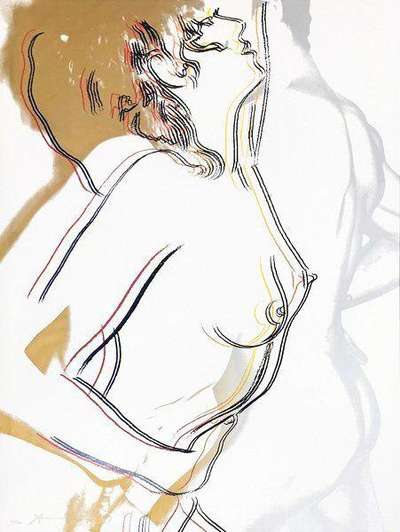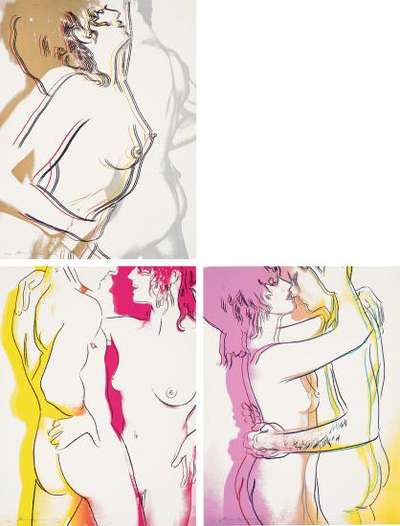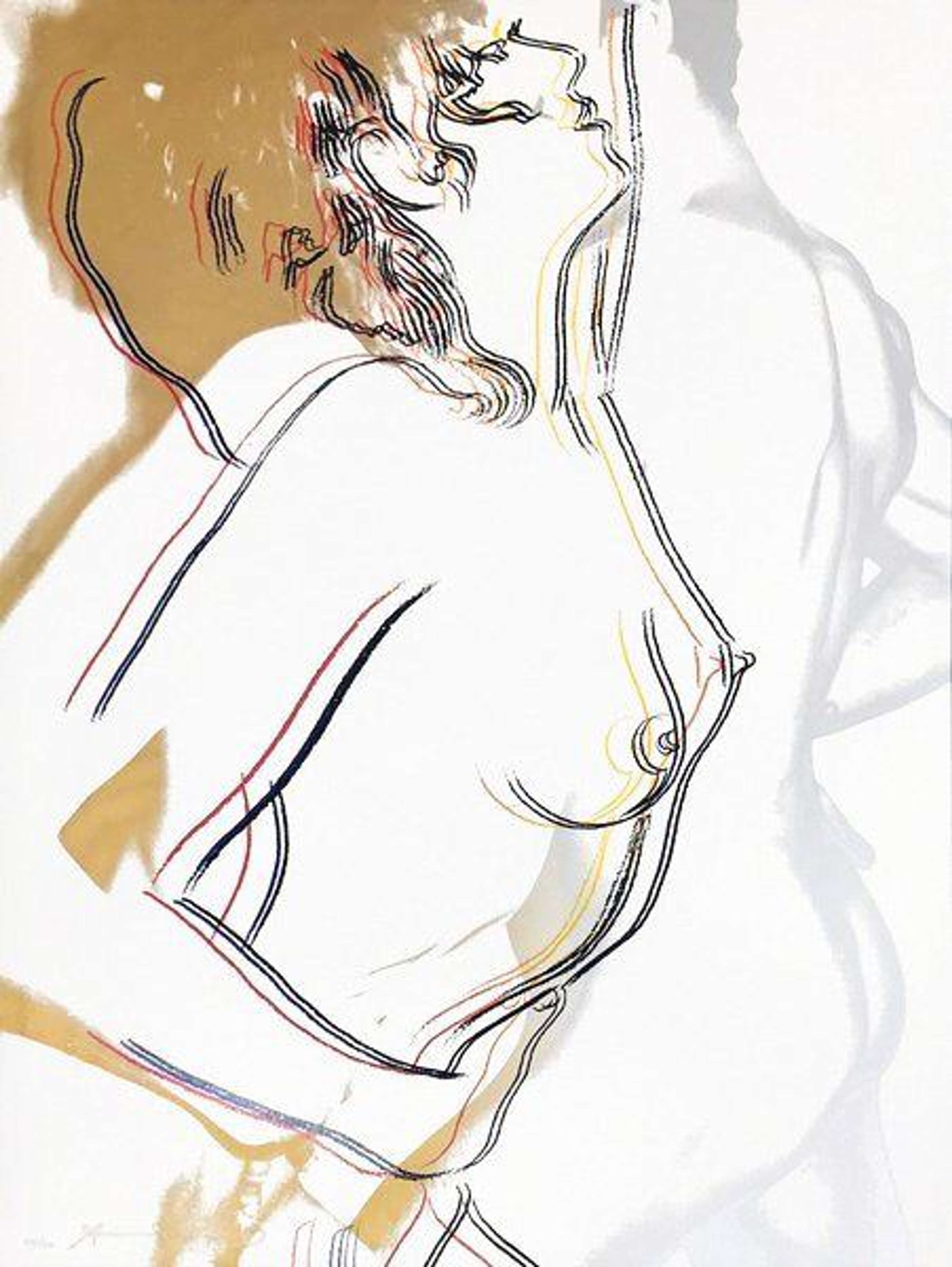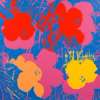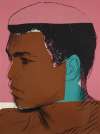Love
Andy Warhol’s Love (1983) series depicts a young couple in various embraces; with an unusually blank white background and smudgy, off-register colours used in place of shadow, Warhol elegantly evokes a sense of movement and an aura of attraction between the bodies.
Andy Warhol Love For sale
Love Value (5 Years)
Works from the Love series by Andy Warhol have a strong market value presence, with 56 auction appearances. Top performing works have achieved standout auction results, with peak hammer prices of £56855. Over the past 12 months, average values across the series have ranged from £10391 to £56855. The series shows an average annual growth rate of 13.13%.
Love Market value
Auction Results
| Artwork | Auction Date | Auction House | Return to Seller | Hammer Price | Buyer Paid |
|---|---|---|---|---|---|
 Love (F & S. 310-312) (complete set) Andy Warhol Signed Print | 24 Oct 2025 | Christie's New York | £42,500 | £50,000 | £70,000 |
 Love (F. & S. II.310) Andy Warhol Signed Print | 19 Jul 2025 | Mainichi Auction, Osaka | £8,925 | £10,500 | £12,000 |
 Love (F. & S. II.311) Andy Warhol Signed Print | 10 Oct 2024 | Mallet Japan | £8,925 | £10,500 | £12,000 |
 Love (F. & S. II.312) Andy Warhol Signed Print | 8 Sept 2022 | Wright | £20,400 | £24,000 | £35,000 |
Sell Your Art
with Us
with Us
Join Our Network of Collectors. Buy, Sell and Track Demand
Meaning & Analysis
Defined by soft lines and an unusual amount of white space, Andy Warhol’s Love series depicts a couple in various stages of embrace. Made in 1983, just four years before Warhol’s death, the series celebrates tenderness and eroticism, love and desire in an elegant composition. The couple is glowing and the vibrant inks of the screen print lend them the air of existing in a fantasy. Their attraction is further heightened by the aura of colour surrounding their bodies.
Warhol had been using the medium of screen printing since the early ’60s. Traditionally associated with the world of commercial printing and advertising he was attracted to its flatness and potential for large scale reproduction. Beginning with a publicity photograph of Marilyn Monroe which he enlarged and coloured into what is now an iconic artwork, Warhol embraced the medium to such an extent that it has now become synonymous with his name. He enjoyed the irregularity of the method, describing it as “quick and chancy … you get the same image, slightly different each time.” By creating large numbers of prints Warhol ensured his work remained accessible to a wide audience, rejecting the snobbery of previous art movements which put the unique canvas and the artist’s mark above all. Instead, Warhol proved himself to be canny in bringing his work to a wide audience through high volumes of production thanks to his many assistants and large studio, which he named the Factory. As he put it, “repetition adds up to reputation.”
It is possible to see Warhol’s origins as a fashion illustrator in the Love series, the fine elegant lines of the couple’s bodies reminiscent of catwalk sketches or early fashion advertisements.
Warhol's skill as a draughtsman is evident throughout the series, from the double lines of Love 310 where a bold graphic line of black is combined with a softer crayon or pencil line of red and yellow, all accented by a shadow of colour. In Love 311 the couple is facing each other, their shadows brightly coloured in a red and yellow haze that contrasts sharply with the outline of their bodies. In Love 312 their contours are shadowed again, giving a kind of double vision effect, the details of skin and hair reduced to seemingly airbrushed neon colours in a stylised effect that makes the work immediately recognisable as a product of the ’80s.
Warhol himself was never known for his great love affairs. He even famously claimed he was still a virgin at the age of 52, though this wasn’t actually true. Warhol did, however, have some advice for lovers, which he expounded in his 1975 book The Philosophy of Andy Warhol (From A to B and Back Again). In it he claims that “people should fall in love with their eyes closed. Just close your eyes. Don’t look” and that “I don’t know anybody who doesn’t have a fantasy. Everybody must have a fantasy.” This sensibility for love and desire is evident throughout his work, not least through his earlier, more overtly erotic series Sex Parts which focuses specifically on genitalia rather than love. One of his final pieces of advice for those embarking on a love affair was that “you should put in exactly as much time and energy as the other person.” And perhaps this image is an endorsement of that statement, the desirous couple seemingly equal in their partnership and in the act of love.
